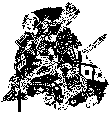 WASHINGTON DESK - Forty-three years ago [1955] this writer, a US Marine stationed at Camp Fuji, while on week-end liberty, entered a darkened Tokyo theatre and watched with an all Japanese audience the new release of Akira Kurosawa's Rashomon. I have never been the same since. I contended then, and still make a case that this is one of the greatest films ever made.
WASHINGTON DESK - Forty-three years ago [1955] this writer, a US Marine stationed at Camp Fuji, while on week-end liberty, entered a darkened Tokyo theatre and watched with an all Japanese audience the new release of Akira Kurosawa's Rashomon. I have never been the same since. I contended then, and still make a case that this is one of the greatest films ever made.
It is a movie that provides the ultimate explanation of how two different people who are witnesses to a crime give completely different psychological recollections of the same event.
Yet Kurosawa's parable is more important, today, perhaps, as a lesson in how we construct the narratives upon which justice depends: What facts must we know to decide the truth? That question makes Kurosawa's inquiry the concern of those who now seek justice in the Clinton presidency, as well.
Since grand jurors have no independent evidence of the witnesses' motives to fabricate, they have no reason to behave like Kurosawa's fact-finder - suspecting, and then demanding, another, more truthful explanation.
I will attest to the honor and value afforded Kurosawa's Rashomon in the Japanese culture of 1955. It meant a great deal to post-War Japanese audiences that stood in mile long lines in pouring rain to get a ticket.
How could they know that Rashomon would become an allegory of the trial of an American president.
Kurosawa reminds us that truth depends on the telling.Someone must step forward and tell that truth.
In Kurosawa's film narrative, three travelers seek shelter inside a crumbling public monument called Rashomon the once-great gate of an ancient city of Japan that has fallen on hard times. Two of the men, a priest and a wood-cutter, have just given testimony in a capital case. Horrified by what they have seen in court, they recount the facts of the case to the third wayfarer, the "Commoner," who becomes Kurosawa's metaphorical jury.
Some facts are undisputed. The priest testifies that he met an armed samurai and his wife, traveling by horseback along a road. The woodcutter testifies that he found the wife's hat, pieces of rope, and the samurai's body in the forest. The sheriff testifies that he arrested Tajomaru, a notorious bandit, riding the samurai's horse.
Yet interpretations of those facts are shaky. Indeed, Kurosawa uses the same details to justify four entirely different versions of what happened in the woods. Sounds like a familiar White House spin cycle.
The bandit Tajomaru confesses to murder. He plotted to rape the wife and to kill her husband. Eventually he did both. Nevertheless, his self-serving testimony paints him as a great lover and heroic fighter.
"Well, men are men," Kurosawa's Commoner responds. "They can't tell the truth even to themselves."
The wife also admits to murder, but in an impaired mental state. She testifies that after being raped by the bandit, the samurai condemned her for having provoked her attacker. Distraught, she seized her dagger and fainted. She awoke to find her husband dead, her dagger in his chest.
The Commoner says, "If I believed her, I'd be really confused."
Through a medium, the dead samurai also gives evidence. He committed suicide. The samurai testifies that after the rape, his wife agreed to leave with the bandit. But she also insisted that the bandit murder her husband. Repelled by her wickedness, the bandit freed the samurai. In shame, the samurai stabbed himself with his wife's dagger.
Kurosawa's Commoner reasoning from the facts, surmises that the woodcutter has stolen the wife's expensive dagger and will not admit that he watched the actual killing. "You must have seen it all," he demands. "Tell me the truth!"
The woodcutter's revised version depicts the scene. After the rape, the wife goaded the men to fight to the death. The bandit lost his sword and avoided being killed only by grabbing the wife's dagger. Holding the weapon, the bandit paused and then stabbed the samurai.
"And I suppose that's the truth!" the Commoner sneers. Yet Rashomon's message is not that falsity is inevitable. Instead, Kurosawa's film shows that, given adequate information, we are entirely capable of distinguishing fiction from fact.
Kurosawa used one set of facts to support two inconsistent explanations of the samurai's death.
Kurosawa, I feel, is showing us only those facts that lead to the conclusion he wants. We forget that the tale-teller can simply turn off the camera at the end of any version he likes.
Kurosawa's ending seems to be less about witnesses than about the society that produces them. The film's distrustful Commoner walks away from the ruins, indifferent to the viewer's aspiration toward truth and resentful of its cost. "You just can't live today unless you're what you call selfish," he quips.
Rashomon's cynical Commoner believes that truth isn't worth the struggle, so he accepts a standard of that which is close enough for government work.
At film's end, the woodcutter and the priest are left alone to hope that some decency somewhere may yet survive this indifference, this fear and these false economies. The woodcutter reminds the viewer that the cost to humanity is negligible over the long-run.
Then he just walks away.

